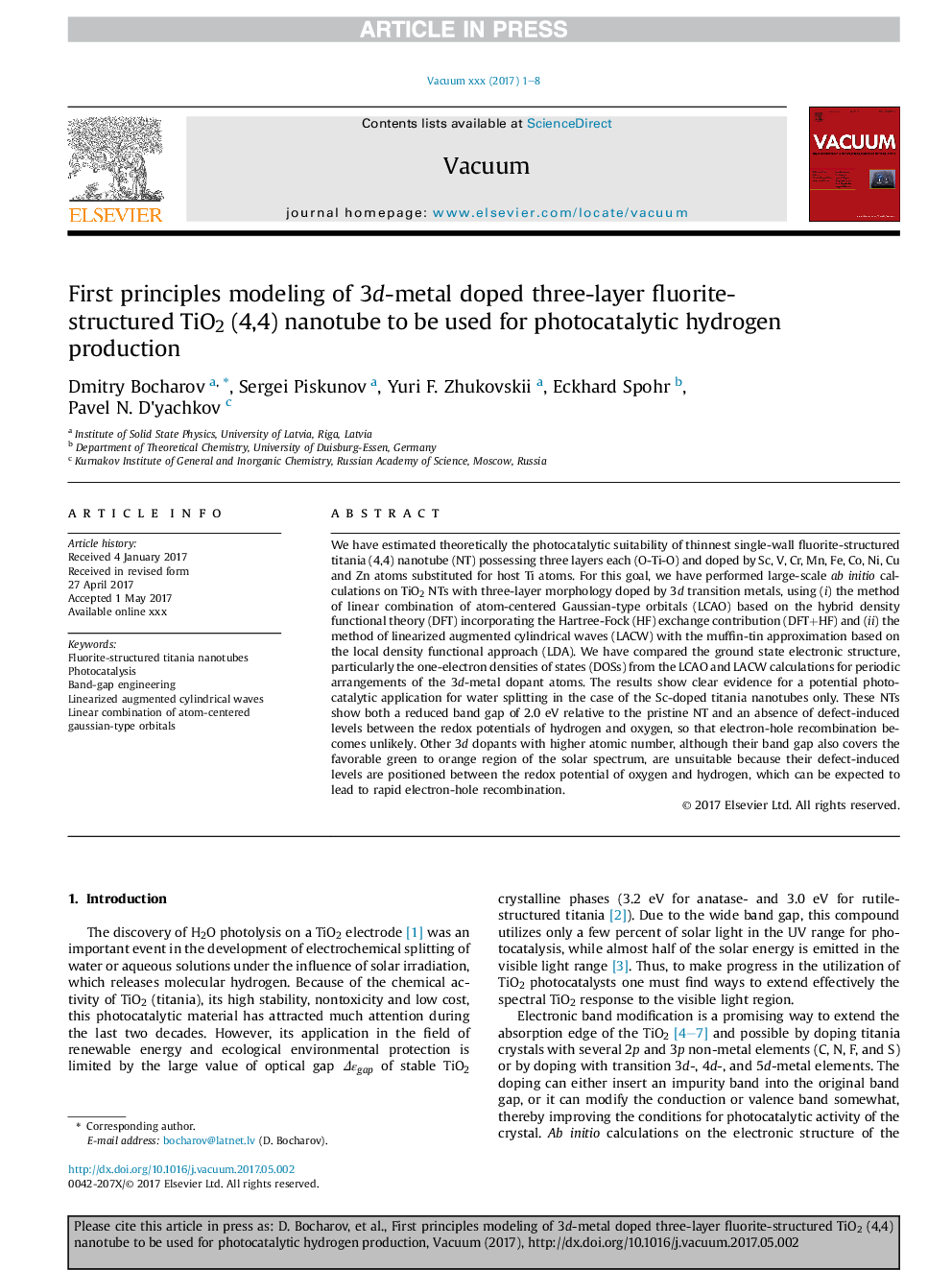| کد مقاله | کد نشریه | سال انتشار | مقاله انگلیسی | نسخه تمام متن |
|---|---|---|---|---|
| 8044799 | 1518924 | 2017 | 8 صفحه PDF | دانلود رایگان |
عنوان انگلیسی مقاله ISI
First principles modeling of 3d-metal doped three-layer fluorite-structured TiO2 (4,4) nanotube to be used for photocatalytic hydrogen production
ترجمه فارسی عنوان
نخستین مدل سازی مدل نانولوله تیتانیوم (4،4) سه لایه فلوریتی ساختاری سه بعدی با استفاده از هیدروژن تولید فتوکاتالیتی
دانلود مقاله + سفارش ترجمه
دانلود مقاله ISI انگلیسی
رایگان برای ایرانیان
کلمات کلیدی
نانولوله های تیتانا با ساختار فلوریت، فوتوکاتالیز، مهندسی باند پهن، امواج استوانه ای تقویت شده به صورت خطی، ترکیبی خطی از اوربیتال های نوع گاوس محور اتم،
موضوعات مرتبط
مهندسی و علوم پایه
مهندسی مواد
سطوح، پوششها و فیلمها
چکیده انگلیسی
We have estimated theoretically the photocatalytic suitability of thinnest single-wall fluorite-structured titania (4,4) nanotube (NT) possessing three layers each (O-Ti-O) and doped by Sc, V, Cr, Mn, Fe, Co, Ni, Cu and Zn atoms substituted for host Ti atoms. For this goal, we have performed large-scale ab initio calculations on TiO2 NTs with three-layer morphology doped by 3d transition metals, using (i) the method of linear combination of atom-centered Gaussian-type orbitals (LCAO) based on the hybrid density functional theory (DFT) incorporating the Hartree-Fock (HF) exchange contribution (DFT+HF) and (ii) the method of linearized augmented cylindrical waves (LACW) with the muffin-tin approximation based on the local density functional approach (LDA). We have compared the ground state electronic structure, particularly the one-electron densities of states (DOSs) from the LCAO and LACW calculations for periodic arrangements of the 3d-metal dopant atoms. The results show clear evidence for a potential photocatalytic application for water splitting in the case of the Sc-doped titania nanotubes only. These NTs show both a reduced band gap of 2.0Â eV relative to the pristine NT and an absence of defect-induced levels between the redox potentials of hydrogen and oxygen, so that electron-hole recombination becomes unlikely. Other 3d dopants with higher atomic number, although their band gap also covers the favorable green to orange region of the solar spectrum, are unsuitable because their defect-induced levels are positioned between the redox potential of oxygen and hydrogen, which can be expected to lead to rapid electron-hole recombination.
ناشر
Database: Elsevier - ScienceDirect (ساینس دایرکت)
Journal: Vacuum - Volume 146, December 2017, Pages 562-569
Journal: Vacuum - Volume 146, December 2017, Pages 562-569
نویسندگان
Dmitry Bocharov, Sergei Piskunov, Yuri F. Zhukovskii, Eckhard Spohr, Pavel N. D'yachkov,
